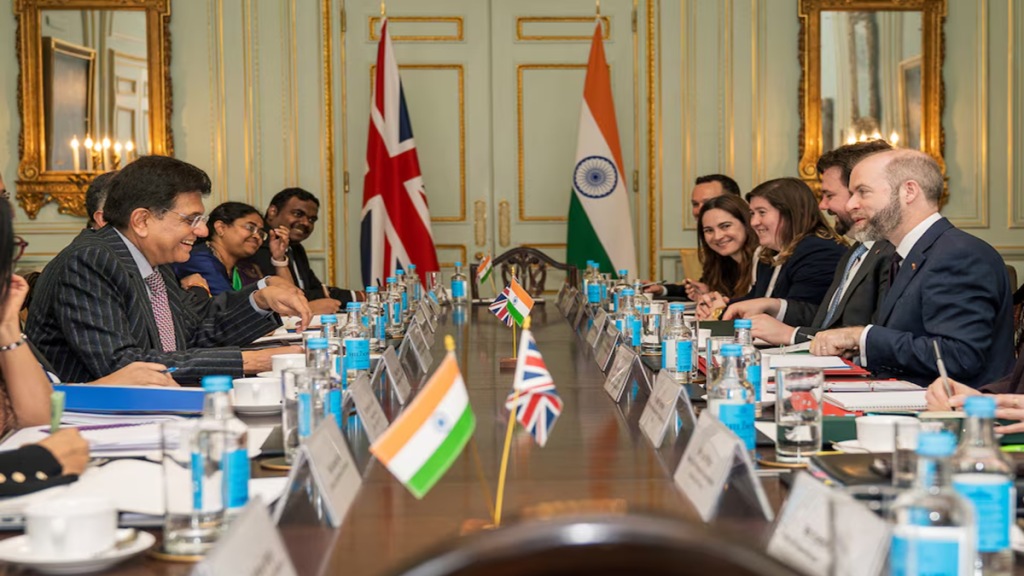India and the UK have signed a landmark Comprehensive Economic and Trade Agreement (CETA)—in the presence of India’s Prime Minister Narendra Modi and his UK counterpart Keir Starmer—that is balanced, comprehensive, and mutually beneficial to both nations. A big advantage of this deal between the world’s fifth and sixth largest economies is that it will serve as a template for India inking equally ambitious trade deals with the European Union and other developed nations, including the US.
Expectations from CETA
Considering the long historical association, Indo-UK trade and investment ties have so far been somewhat underwhelming. The CETA could be a game changer in this regard as bilateral trade in goods and services is expected to increase by $34 billion each year from current levels of $56 billion. India has a trade surplus of $11 billion. This is a win-win deal as India secures preferential access to one of the world’s most affluent markets while the UK accesses the market of the fastest-growing large economy.
India gets duty-free access for 99% of its merchandise shipments to the UK. In return, India will cut duties on 90% of its tariff lines for UK goods, with a commitment on zero tariffs on 85% of the items in the next 10 years. This is a huge benefit for India as its labour-intensive exports of clothes, footwear, and food items, including frozen prawn, will face zero duties in the UK.
With lower tariffs, UK companies selling products from soft drinks and cosmetics to medical devices will also find it easier to sell in the Indian market. New Delhi has acceded to London’s long-standing demand for lower tariffs on Scotch whisky and gin, which are to be halved to 75% immediately and further to 40% in a decade. Tariffs on cars will fall from over 100% to 10% subject to a quota. However, India has held firm on its agricultural red lines as dairy products, apples, and cheese have been excluded.
Services in CETA
On services too, there are major gains for India with greater access for suppliers in digitally-delivered, financial, professional, and educational services. The CETA eases mobility of professionals including contractual service providers, business visitors, intra-corporate transferees, including 1,800 visas for independent professionals like yoga instructors, musicians, and chefs.
The UK did not yield to broader visa access or post-study work rights, according to the Financial Times. India has secured a major gain with the Double Contribution Convention under which its professionals working in the UK for a limited period will be exempt from paying social security contributions for three years. We have provided access to UK firms to participate in non-sensitive areas of government procurement annually worth $50 billion.
The potential of the mutually beneficial CETA can be realised if both nations step up investments in each other’s economies. The UK’s investments in India from April 2000 to March 2025 were $36 billion while India’s outbound foreign direct investment to the UK was $20.2 billion. Progress in this direction depends on when a bilateral investment treaty is signed. But the good news is that businesses from both nations are keen to leverage the CETA. Around 26 British companies have announced new business in India. A 16-member Indian business delegation will be meeting their UK counterparts to expand opportunities. With greater investments, bilateral trade can easily rise to $120 billion by 2030 and another $40 billion by 2040.

